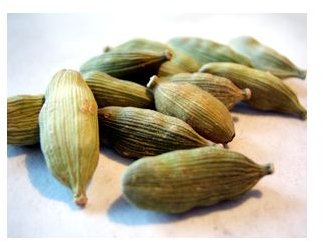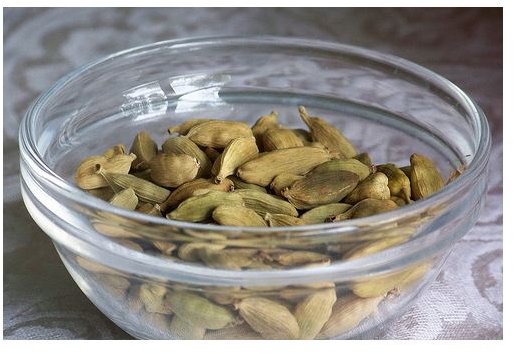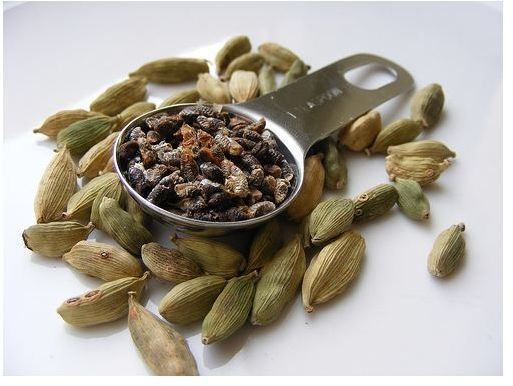Cardamom Health Benefits: Effects of This Ancient Spice on Digestion, Circulation, the Nervous System & More
Cardamom’s distinctive, heady aroma and painstaking harvesting process make it the second most valuable spice in the world. One of the oldest spices in memory, cardamom, in the ginger family, originates near Sri Lanka and is currently cultivated in both East (India, Cambodia, and Sri Lanka) and West (El Salvador and Guatemala). Two species of cardamom are commonly used. One, Elettaria, has small, green pods, while the other, Amonum, has larger, brown seed pods and is traditionally used in folk medicine in Southeast Asia.
Cardamom’s uniquely sweet and pungent aroma make it popular in culinary uses such as curries, coffee flavoring and baked goods. However, just like many of the other spices commonly used in curry, cardamom has many health benefits. Many of these are based in Ayurvedic medicine and folklore. As such, mention of these benefits should be taken with a grain of salt. However, modern science has begun delving into the aromatic compounds in cardamom and other spices and identified quantifiable beneficial effects.
We discuss some cardamom health benefits below. Whenever specific claims are supported by Western science, this is noted.
General Health

Cardamom is regarded as having general anti-inflammatory properties. Additionally, its oils contain compounds that influence cholinergic acitivty — both acetylcholine and choline, neurotransmitters that regulate the nervous system. This may explain cardamom’s reputation for having stimulative effects on autonomic bodily systems like digestion and circulation.
Digestive Health

As mentioned above, cardmom has a reputation in Ayurvedic medicine for being a digestive system cure-all. It is believed to improve digestion, relieve stomach cramps, act as a carminative (reduces flatulence), treat indigestion and gastritis, and generally stimulate digestion itself.
The National Cancer Institute has found that inhaling the vapors of cardamom oil relieves nausea associated with chemotherapy. Studies have also shown that compounds in cardamom may kill the bacteria H. pylori, which is associated with gastroesophageal reflux disease (GERD) and ulcers. The German Commission E, Germany’s herbal remedy evaluation group, has approved of the use of cardamom for dyspepsia, and recommends no more than 1.5 grams per day.
Respiratory Health
Cardamom may improve blood circulation to the lungs, and is indicated in folk medicines to relieve symptoms of asthma and bronchitis.
Nervous System Health
Neurotransmitters have been identified in cardamom, aceylcholine and choline, which explains herbal medicine’s position that cardamom may behave as a stimulant to the nervous system, and uses it to help prevent convulsions or spasms.
Circulatory System Health
Scientific studies have shown that cardamom has a blood thinning action, due to its high concentration of linoleic acid.
Dental Health
Cardamom has long been used to freshen breath.
Sexual Health
The ancient Arabs believed cardamom to be an aphrodisiac, and the spice made frequent appearances in Arabian Nights.

Cardamom is an ancient spice with a long history — it was Cleopatra’s favorite scent. Cardamom health benefits are primarily calming and aiding digestion, as well as behaving as a general stimulant. It has antioxidant and anti-inflammatory compounds, and has shown promising results in early scientific research. Use cardamom in some curry or cookies today and reap the health benefits of this aromatic, sweet, exotic spice.
References
Blumenthal, M (Ed.): The Complete German Commission E Monographs: Therapeutic Guide to Herbal Medicines. American Botanical Council. Austin, TX. 1998.
VALUE-ADDING FACTORS IN COLD-PRESSED EDIBLE SEED OILS AND FLOURS: https://drum.lib.umd.edu/bitstream/1903/4173/1/umi-umd-3974.pdf
Medicinal Spices Exhibit - UCLA Biomedical Laboratory: https://unitproj.library.ucla.edu/biomed/spice/index.cfm?displayID=3
Center for Health & Wellness at Kaplan University: https://healthandwellness.kaplan.edu/
Images:
